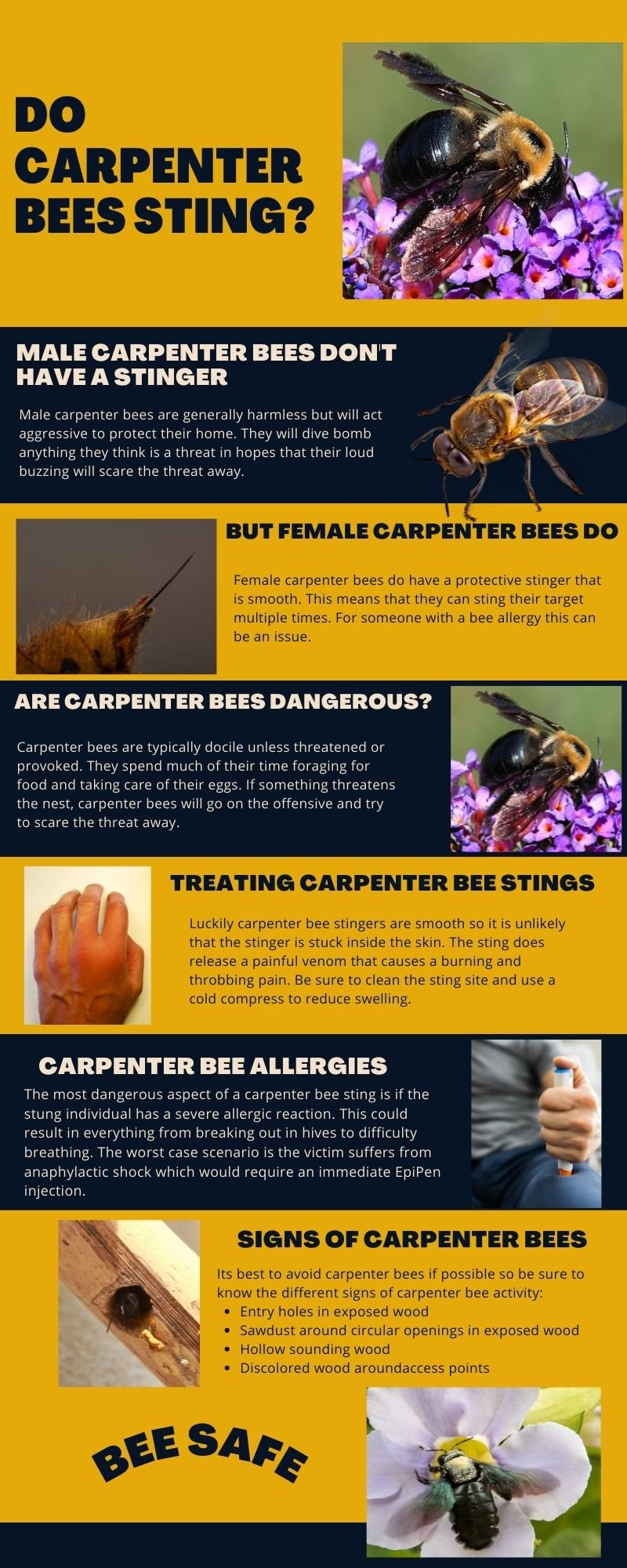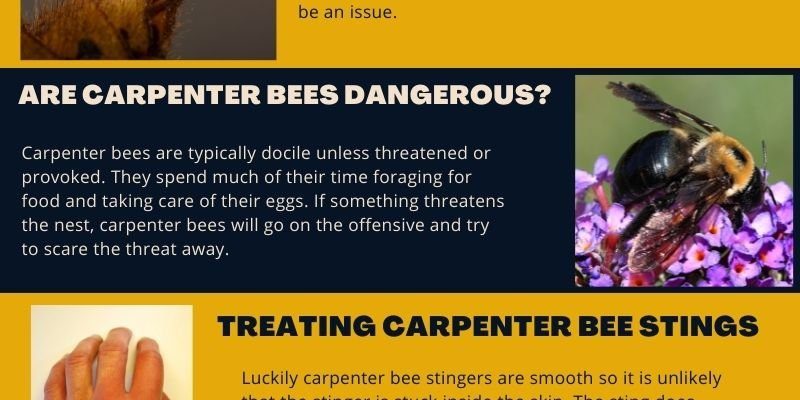
Imagine for a moment that you’re in your backyard, enjoying a sunny day when a massive bee zooms by. It looks like it could take a chunk out of your sandwich! But hold on—what if I told you that carpenter bees are generally harmless? Yes, they might seem intimidating, but understanding their behavior and the risks they pose can help ease your mind. Let’s explore their stings, aggression levels, and safety tips to keep you and these buzzing pollinators on friendly terms.
What are Carpenter Bees?
Carpenter bees are fascinating creatures, belonging to the genus *Xylocopa*. Unlike honeybees, which live in large colonies, carpenter bees are typically solitary. They get their name from their impressive ability to burrow into wood—yes, they can essentially “carve” out homes for themselves! You’ll often find them nesting in untreated wood, such as decks, fences, or even your favorite wooden garden furniture.
There are about 500 species of carpenter bees worldwide, with two main ones commonly found in North America—the Eastern carpenter bee and the Western carpenter bee. While they might look a bit intimidating due to their large size (sometimes as big as a quarter!), it’s essential to note that their primary focus is on finding food and shelter rather than bothering humans.
Do Carpenter Bees Sting?
When it comes to stings, here’s the thing: carpenter bees are not naturally aggressive. Males don’t sting at all—think of them as the guardians without the “stinger.” They might fly close to you to display dominance, but it’s more of a bluff than a threat. Female carpenter bees can sting, but they usually only do so if provoked.
If you accidentally disturb a female while she’s working on her nest, she might give you a little poke. But honestly, their sting is not considered dangerous. It’s more like a pinprick, often resulting in mild discomfort rather than a headache. In rare cases, someone with bee allergies might have a more severe reaction, so if you’re allergic to bee stings, it’s best to stay cautious.
Signs of Carpenter Bee Activity
Now that we’ve cleared the air about stings, let’s talk about how to spot carpenter bees in action. Their presence is often indicated by specific signs:
- Drilled Holes: Look for perfectly round holes, usually about ½ inch in diameter, in wooden structures. These holes are entrances to their tunnels.
- Frass: If you see small wood shavings or sawdust around the holes, that’s a telltale sign of carpenter bees. They push this debris out as they dig.
- Buzzing: The sound of their buzzing can be quite noticeable, especially during the warmer months when they’re most active.
- Hovering Behavior: When you see them hovering around their nesting sites, it’s a good indication they’re checking on their home.
If you notice these signs, you might want to assess how to deal with them, especially if they’re causing damage to your wooden structures.
Are Carpenter Bees Aggressive?
Aggression in carpenter bees is often misunderstood. They’re not out for revenge or looking to attack anyone. Most of the time, they’re focused on one thing: pollination. They prefer to spend their days buzzing around flowers, helping with their vital task of plant reproduction.
However, it’s important to know that females can become protective of their nests. If you stumble too close, they might display defensive behavior, like buzzing loudly or flying in your direction. Remember, they’re trying to scare you away, not hurt you. If you keep your distance and let them do their thing, you’ll likely avoid confrontation altogether.
Safety Tips Around Carpenter Bees
Even though carpenter bees are mostly harmless, it’s wise to take some precautions if you’re concerned about their presence. Here are some simple steps to keep in mind:
- Wear Protective Clothing: If you’re working in your garden and you know there are carpenter bees around, consider wearing long sleeves and pants to protect yourself.
- Avoid Disturbing Nests: If you see a carpenter bee nest, give it space. Do not poke or prod it—this could lead to an unexpected sting.
- Use Caution When Gardening: When trimming plants or doing yard work, be mindful of buzzing sounds. You don’t want to accidentally surprise a bee!
- Consider Professional Removal: If you have a significant carpenter bee infestation, it might be best to reach out to a pest control professional who can handle the situation safely.
Taking these steps can help ensure that you and the carpenter bees coexist without any hiccups.
Carpenter Bees vs. Honey Bees: The Differences
You might be wondering how carpenter bees stack up against honey bees. While both play essential roles in our ecosystem, they have quite different lifestyles and habits.
- Social Structure: Honey bees are social creatures living in large colonies, while carpenter bees tend to be solitary.
- Nesting Habits: Carpenter bees nest in wood, while honey bees build hives using beeswax.
- Stinging Behavior: Honey bees will sting if they feel threatened, and they can only sting once. Carpenter bees, as mentioned earlier, only sting when provoked.
Understanding these differences can help you better appreciate each bee’s role in your garden and beyond.
In Conclusion
So, is the carpenter bee dangerous? The short answer is no, not really. They’re more interested in pollinating flowers and making homes than causing trouble. While their size and potential for a sting may raise concerns, knowing how to safely coexist with these fascinating insects can ease your worries. Remember, they’re just doing their job, and with a little awareness, you can enjoy your garden without fear. Next time you see one buzzing around, take a moment to appreciate the hard work they’re doing for our environment!

